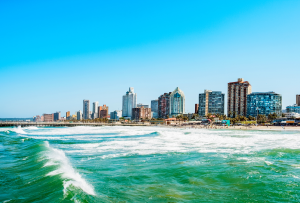
New List of Durban Street Names - Updated
KwaZulu Natal's new Durban street names has caused much controversy. Here is a comprehensive list...
 25 October 2024
25 October 2024 
Imagine this: waking up in the morning with the dawn chorus the alarm clock, hands tightly wrapped around a steaming hot beverage, and then a whole day of watching the antics of all things wild and wonderful. Then, you get to end off your eventful day having dinner while being serenaded by a wild beast of some sort, making his or her presence known not too far off.
This is what bush camping could be like, a thoroughly enjoyable experience. For the old hands, it should be a walk in the park –excuse the pun – but for the novice, it can be a daunting experience. Having a few tricks up your sleeve, like this bush camping checklist, can be very helpful when it comes down to setting up camp and surviving in the bush. After all, you want to make it an experience to remember.

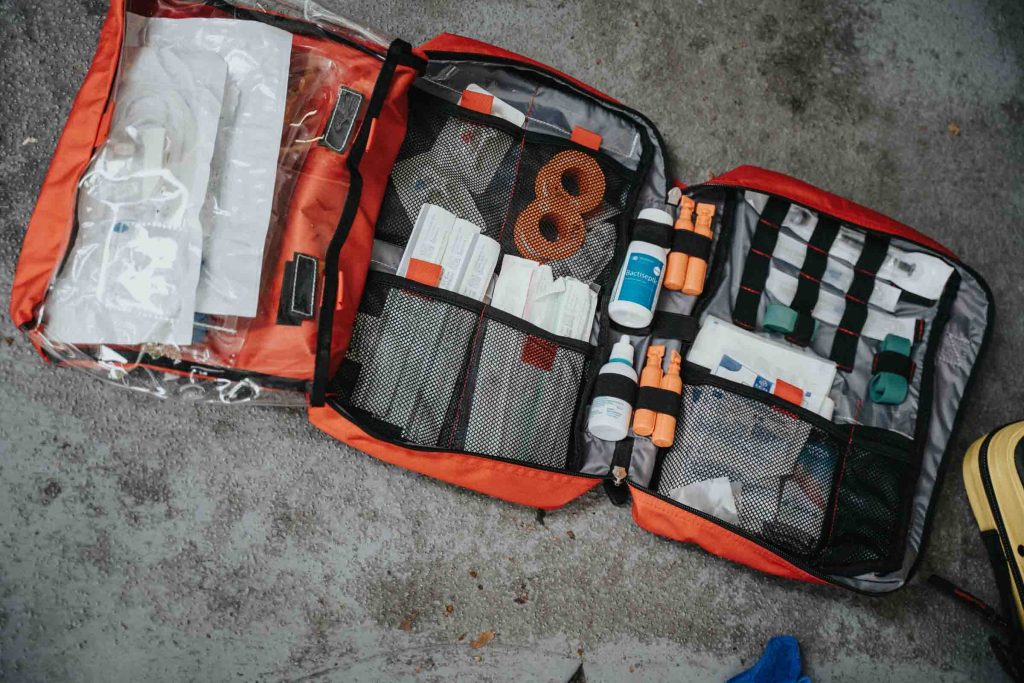
Photo: Unsplash
This is the most important part of your bush camping checklist to go through before you head out into the wilderness. Make sure that the medication, ointment and anything else with an expiry date are still good to use. It’s also vital to ensure that you are covered for all eventualities – from bandages for scrapes and burns, to spray, lotions and disinfectants for insect bites, to tablets for headaches and other pains.
Remember: there might not be any cellphone reception where you’re going, so you’ll need to be able to treat any injuries or illnesses on your own until you can get to a doctor.
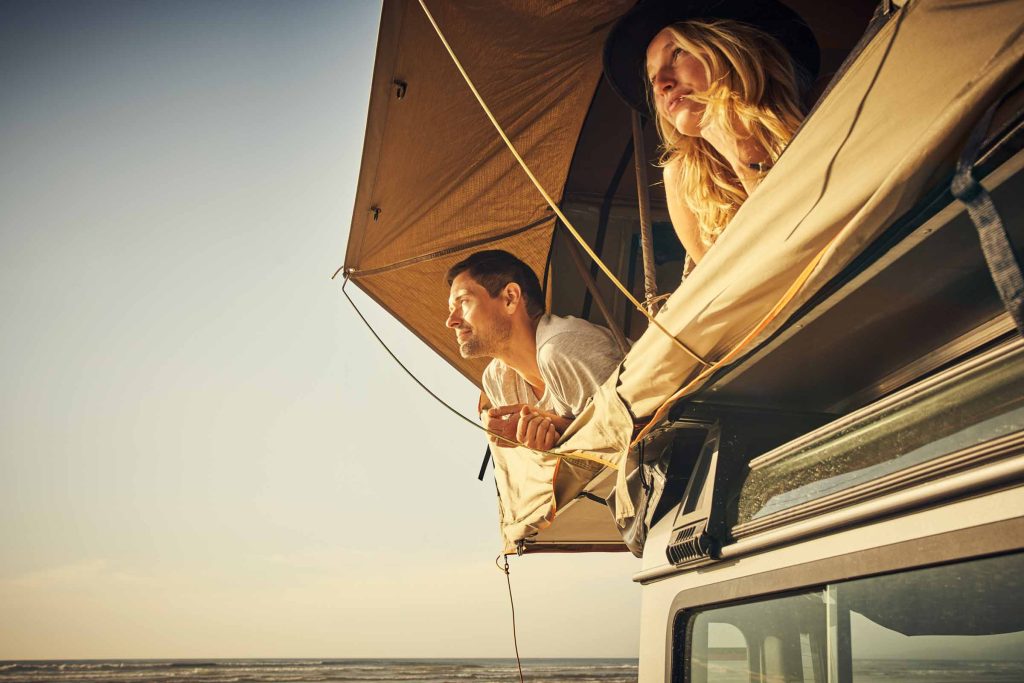
Photo: Getty
For this section of your bush camping checklist, bigger is definitely better. If there are two of you, get at least a four-person tent. Always pack at least two waterproof groundsheets – one for under and one for over – and don’t forget a reflective ribbon or two for the guy ropes to avoid tripping unceremoniously on your bush camp safari.
If you’re hiring a camping-equipped 4×4, you’ll get the added benefit of a roof top tent. Not only is this easy to set up, but it will also keep you off the ground and away from snakes, spiders, and bigger wildlife.
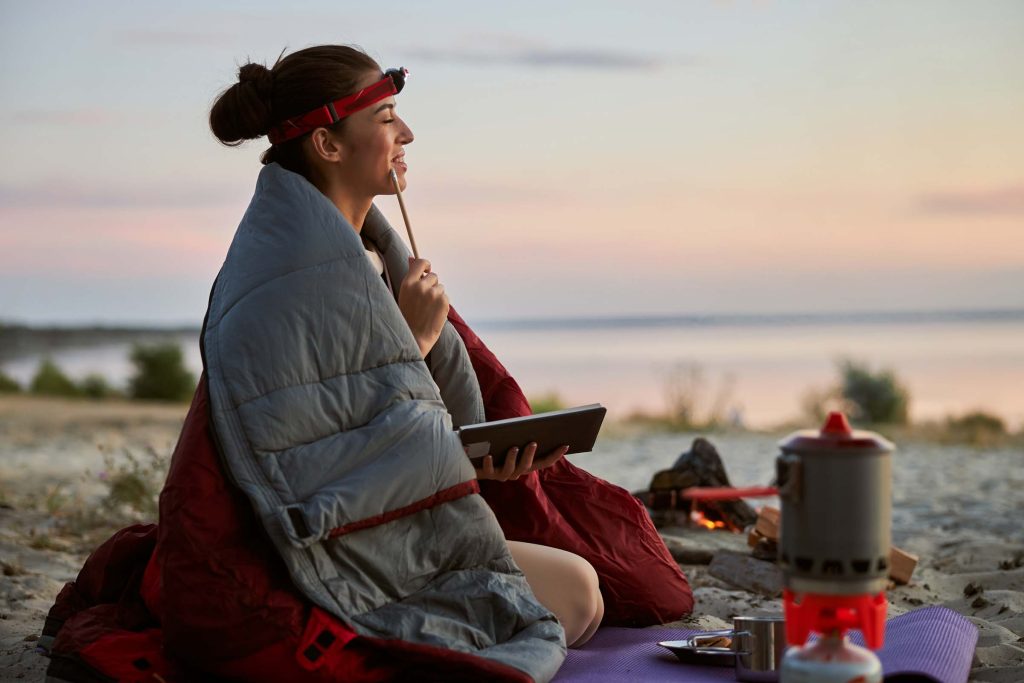
Photo: Getty
Instead of a thin yoga mat-type mattress, invest in a good blow-up mattress that will make for a much better night’s sleep while camping in the bush. Your sleeping bag should be as thick, or thin, as you like. The same applies to the pillow.
Roof top tents come with built-in mattresses that are often far more comfortable than regular camping mattresses. Plus, you can stow all your bedding in the tent and it’ll still close!
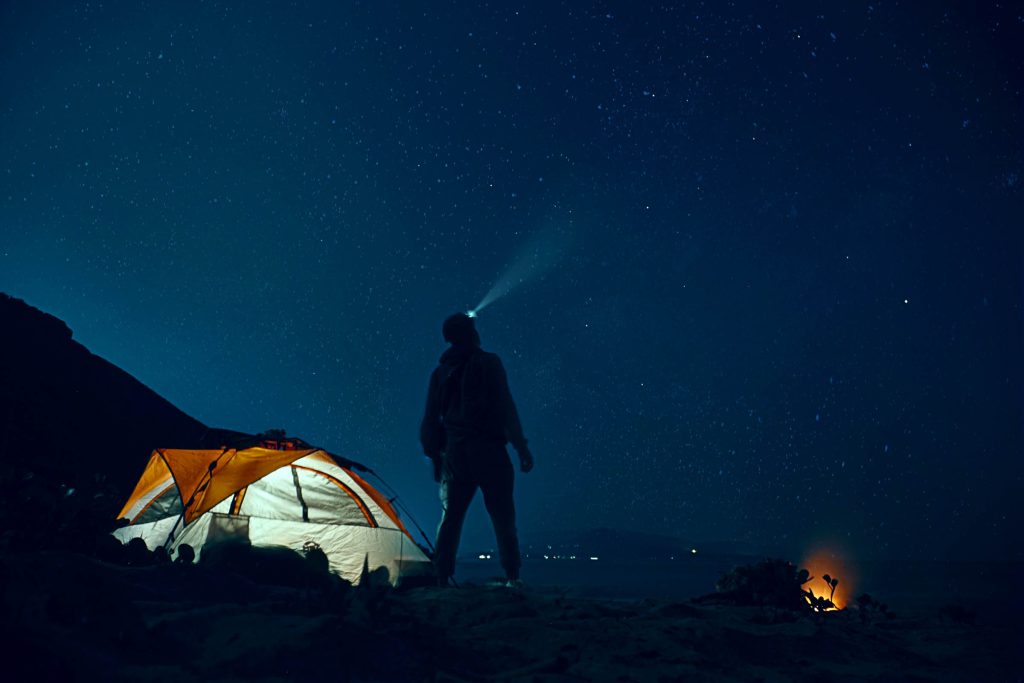
Photo: Unsplash
“Look, no hands!”
headlamp is invaluable as it’s compact in size and can be operated while setting up your camp, cooking, cleaning, and reading. Other portable lamps, like lanterns and flashlights, are also handy. Remember to add a pack of spare batteries to your checklist for bush camping, unless you have a rechargeable option.
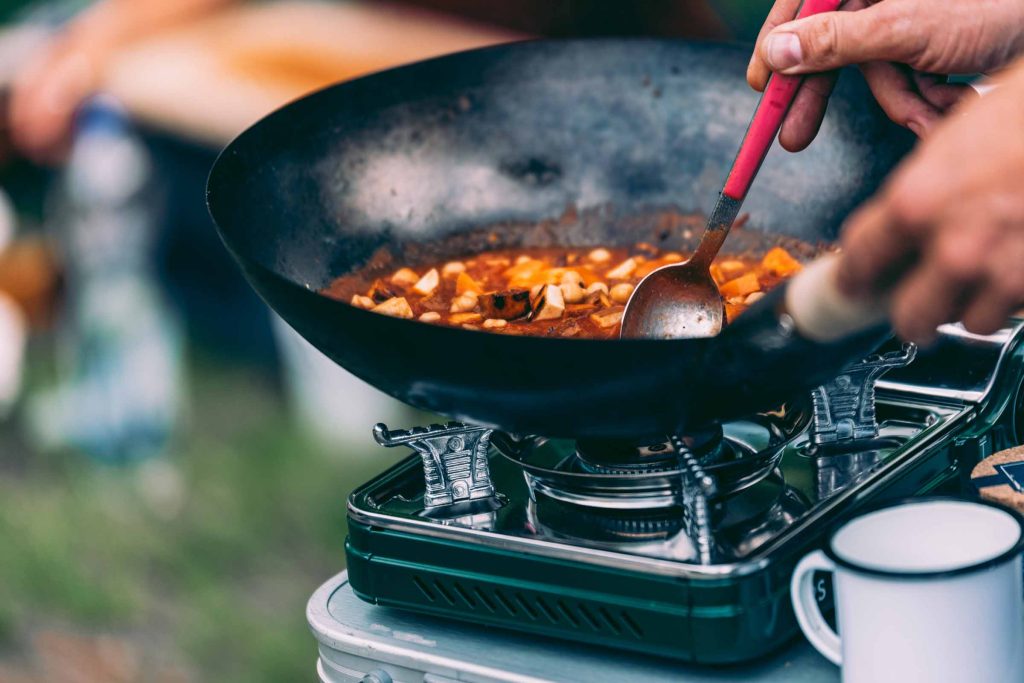
Photo: Getty
Instead of scurrying around at the last minute and inevitably forgetting something, get a storage box for when you go on your bush adventure and fill it up with all the essentials. This should be the usual suspects: knives, forks, spoons, plates, bowls, cups, glasses, pots and pans, bottle and can openers, braai tongs, containers for storing leftovers, a small camp stove, cleaning aids, and anything else you may need to add to your checklist for camping in the bush.
Camping-equipped 4x4s and campers often come with their own kitchen boxes, which include basically everything you’ll need for your camp kitchen. Just make sure you have enough gas in the tank, especially if you’re a fan of big breakfasts.
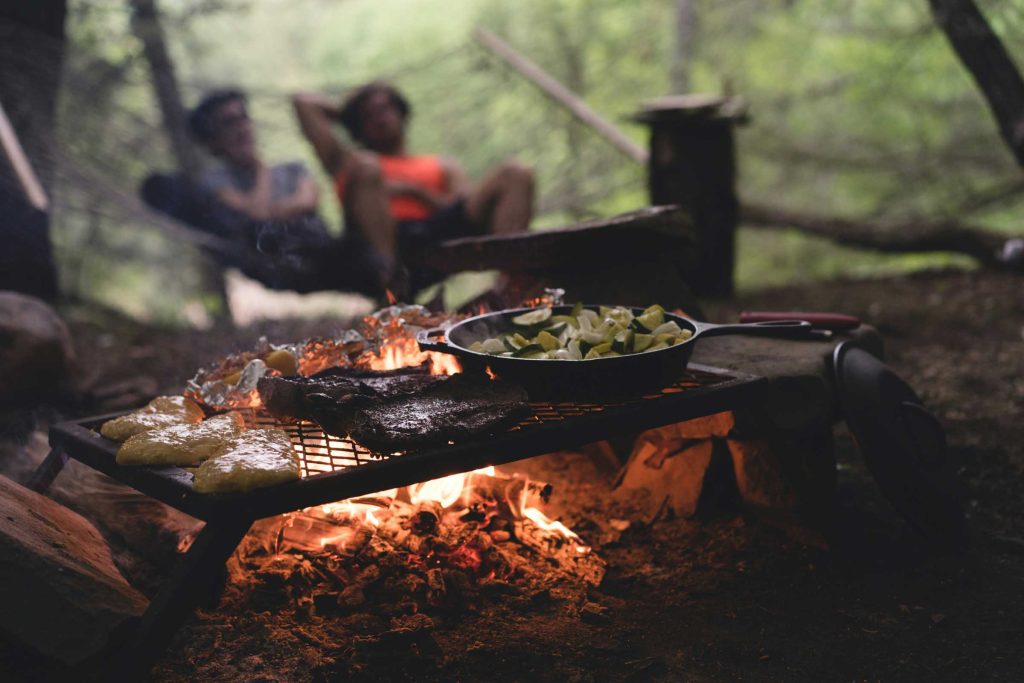
Photo: Unsplash
Before we even get to food, make sure you have enough water for your bush adventure. It can come in handy for everything from drinking to cleaning to cooking and bathing. There’s nothing like dining al fresco, but water will help you turn cooking outdoors into a simple task.
Get a container to store your dry food items in. Breakfast and brunch can consist of rusks, cereal, and a good fry-up, consisting of eggs, bacon, and toast. For dinner, the traditional braai with accompaniments like pap, corn on the cob, and potatoes wrapped in foil will do nicely. Also, don’t forget a couple of tinned vegetables (beans, sweet corn), chakalaka, tuna, cup-a-soup, instant mash, and something sweet like marshmallows as an after-dinner treat.
You’ll be happy to know that our camping-equipped vehicles can be hired with fridges and freezers, meaning you can go further without worrying about your meat defrosting or your dairy products going sour. Plus, these vehicles often have large water tanks, so you won’t have to lug water around from place to place.

Photo: Getty
There are always those items that you don’t necessarily think of that should be a must on your bush camping checklist. Some things to remember include:
After reading this bush camping checklist, we’re sure that you’ll be feeling much more prepared for your next bush camping adventure. If you’re planning a self-drive journey into Africa, and are learning about important elements of enjoying a well-planned safari, then take a look at all our camping-equipped 4×4 and camper options and start building your dream bush camping itinerary!